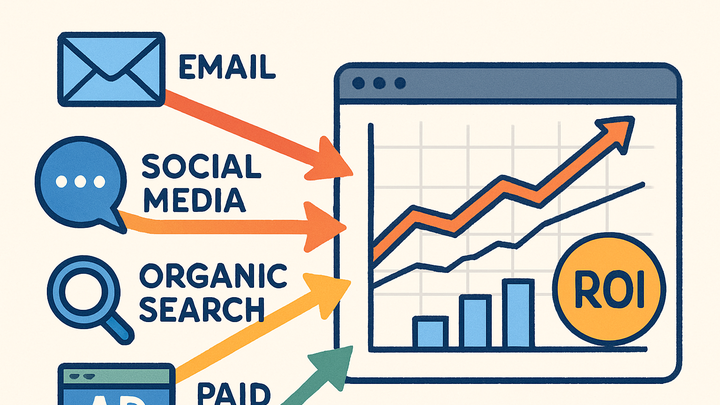Published on 2025-06-26T04:18:50Z
What is Channel Optimization? Examples in Analytics
Channel optimization is the strategic process of analyzing and refining the various marketing and distribution channels a business uses to engage customers and drive conversions. It focuses on identifying which channels (such as email, social media, paid search, and organic search) deliver the most value relative to cost. By leveraging analytics platforms like Google Analytics 4 (GA4) and PlainSignal, marketers can track channel performance, attribute conversions accurately, and make data-driven adjustments. Effective channel optimization involves continuous testing, budget reallocation, and messaging tweaks to maximize ROI and improve customer acquisition cost (CAC). In a privacy-first world, tools like PlainSignal offer cookie-free analytics that respect user privacy while providing essential channel insights. Ultimately, channel optimization ensures that marketing efforts are focused on the most impactful channels, leading to sustainable growth and better resource allocation.
Common channels include:
- Email marketing
- Social media
- Paid search (PPC)
- Organic search (SEO)
Channel optimization
Process of fine-tuning marketing channels to maximize conversions, ROI, and engagement using analytics data.
What is Channel Optimization?
This section defines channel optimization and its core objectives in an analytics context.
-
Definition
Channel optimization is the process of identifying and improving marketing and distribution channels to increase conversions while minimizing cost.
-
Goals
Key goals of channel optimization include:
-
Increase roi
Boost return on investment by allocating budget to the best-performing channels.
-
Lower cac
Reduce customer acquisition cost by optimizing costly channels and enhancing efficiency.
-
Improve engagement
Enhance user engagement metrics such as click-through rate and time on site.
-
Key Metrics and KPIs in Channel Optimization
Successful channel optimization relies on tracking specific metrics that reveal channel performance and user behavior.
-
Conversion rate
The percentage of visitors from a particular channel who complete a desired action (e.g., purchase, signup).
-
Channel attribution
The method of assigning credit to different channels based on their contribution to conversions.
-
Cost per acquisition (cpa)
The average cost to acquire a customer through a specific channel.
Implementing Channel Optimization with Analytics Tools
Leverage analytics platforms to gather channel data, run tests, and apply insights for optimization.
-
Using GA4 for channel analysis
Google Analytics 4 provides default and custom channel groupings, real-time reporting, and exploration tools to track cross-channel performance.
-
Channel grouping
Organize traffic into channels like Organic Search, Direct, and Social by default or custom rules.
-
Funnel exploration
Visualize the customer journey across channels to identify drop-off points.
-
-
Using PlainSignal for cookie-free insights
PlainSignal is a privacy-first analytics tool that delivers simple channel reports without cookies, ensuring compliance and quick setup.
-
Integrating PlainSignal tracking code
To integrate PlainSignal, add the following snippet to your site’s <head> section:
<link rel="preconnect" href="//eu.plainsignal.com/" crossorigin /><script defer data-do="yourwebsitedomain.com" data-id="0GQV1xmtzQQ" data-api="//eu.plainsignal.com" src="//cdn.plainsignal.com/plainsignal-min.js"></script>
